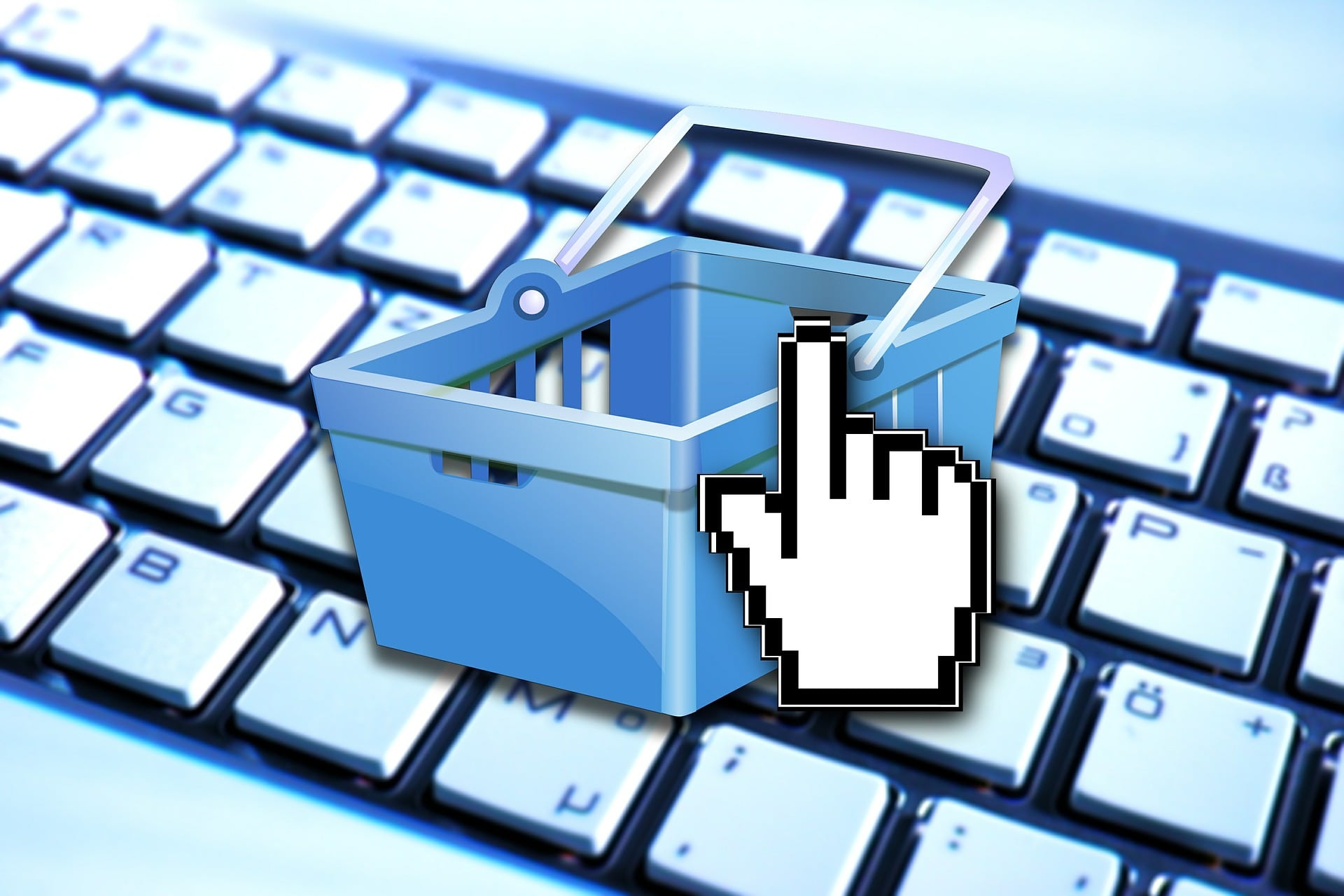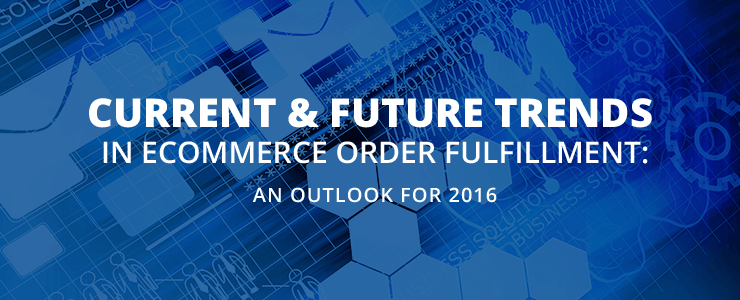
Current and Future Trends in Fulfillment : An Outlook for 2018
Ecommerce
In 2016, e-commerce grew by an estimated 45%, a whopping 15.8% increase from 2015. With online retail on the rise, merchants of all sizes have departed from catalog and brick and mortar sales to focus on a sales channel experts say is worth over $372 billion. Amidst mobile optimization, marketing campaign personalization, competitive rate comparison ...
In 2016, e-commerce grew by an estimated 45%, a whopping 15.8% increase from 2015. With online retail on the rise, merchants of all sizes have departed from catalog and brick and mortar sales to focus on a sales channel experts say is worth over $372 billion. Amidst mobile optimization, marketing campaign personalization, competitive rate comparison at the click of a mouse and the rise of in-store pick up programs, online transactions are shaping seller’s strategies. With the new year fast approaching, we take a look at the biggest trends for 2016 and burgeoning trends in 2017.
Ecommerce Fulfillment Trends in 2017
Subscription Boxes
Over 2,000 retailers now offer monthly subscription boxes carefully curated around a certain theme or interest to tantalize a new age of curious customers, and that number is growing. From a consumer’s prospective, subscription boxes offer a unique experience from the element of surprise during “unboxing” to the excitement of discovering a new brand or product. Often, buyers will share their experience across a variety of media through photos, “spoilers”, candid reviews and videos.
Retailers are seizing the moment of a resurgence in niche focused “of-the-month-clubs” and investing in the subscription box business. It’s no surprise since the industry has grown over 3000% since 2013. In an effort to get in on the action, e-retailers are crafting their own box to bring to the market. These retailers face stiff competition with tight deadlines to assemble a unique and cost-effective package each month in order to retain subscribers. With such high stakes, many of these businesses choose to outsource their operations to fulfillment professionals.
E-commerce fulfillment companies can provide a range of turn-key services for subscription boxes. In an industry focused on offering subscribers a high-quality unboxing experience at the lowest possible cost, 3PLs must quickly assemble each box according to that month’s build guide. Boxes often include brand-centric packaging, brightly colored dunnage, several products and glossy inserts detailing the contents. In addition to stringent quality control procedures during the assembly process, fulfillment companies must maintain an accurate count of available inventory while documenting lot control and expire dates of products to ensure subscribers receive the freshest items. Throughout the process, the fulfillment service is expected to trace and track each order from the receiving dock to consumer receipt and to retain these records for clients. At the end of the delivery period, retailers monitor consumer’s response on media channels to gauge the success of the box and drive decisions for the following month.
Product Bundling
To increase sales while decreasing inventory levels, many e-retailers are offering multiple products bundled into one sale item. The tactic allows consumers to try multiple items at once, often at a discounted rate of 7-15%. While bundling has been promoted as a valuable marketing and sales tool for the past 40 years, in 2016 we saw a rapid rise in the number of retailers offering sets. Fulfillment services often work with clients to build sets on demand, pre-kit items into sample packs or can set up their order management system to recognize multiple components as a singular SKU. Each method provides strategic advantages and can be used in conjunction with any combination of the aforementioned options to reduce operating costs, differentiate from competitors, sell slow moving inventory, boost revenue and bolster the likelihood of a product review.
Multi-Channel Sales
This year saw a sharp increase in the number of multi-channel merchants. In years past, most retailers sold their merchandise through an e-commerce site, storefronts and catalogues. Presently, in an effort to scale business without the hassles of a conventional brick and mortar, more companies are boosting sales through retail partnerships and online stores. Whether drop-shipping individual consumer orders placed on external retailer’s websites or shipping direct-to-retailer, fulfillment services can alleviate the challenges that occur when shipping through additional channels. A 3PL can integrate with channels through API or EDI to automatically induct orders, post shipment confirmations and provide real-time feedback on inventory or shipping status. They can also prep merchandise according to retailer’s specific inbound routing guides so the company can focus on growing sales rather than filling orders.
E-Commerce Fulfillment Trends for 2018
“The Amazon Effect”
With Amazon sales accounting for over 60.5% of online sales growth, retailers have felt the pressure to adopt competitive policies in an effort to keep up with the behemoth. Retailers are finding success in either leveraging the mega-retailer’s customer base and logistical resources via FBA or using a multi-facetted marketing approach that includes selling select merchandise through Seller and/or Vendor Central to increase brand awareness. Additionally, sellers are able to use third-party fulfillment centers as a strategic resource to prepare inventory for sale on Amazon, maintain required service levels and manage order fulfillment. In order to offer similar shipping terms, e-retailers can leverage fulfillment centers carrier contracts to drive rates down while speeding transit to consumers. As Amazon continues to grow, we foresee more retailers signing on as a seller through the channel.
Extensive Analytics on Best-Way Shipping
Each year, major carriers increase their service rates and surcharges by at least 4.9%. This unavoidable rise in shipping costs comes amidst an industry wide pressure to offer free shipping through expedited methods. As the prices skyrocket, retailers feel the crunch of their margins and smaller companies below certain volume thresholds struggle to negotiate rate savings. Pressed to find better ways to ship packages for less, these retailers often turn to fulfillment centers for help in cutting costs. In addition to passing on postage rate savings, these 3PLs can perform detailed analysis on the destination, contents, speed, package weight and dimensions to determine the best shipping method for each order. As FedEx, UPS and USPS announce their new rates for 2017 we would expect to see an influx in retailers looking for an alternate solution.
Expanding North American Reach through Cross-Border Partnerships
With Amazon Prime setting the bar for delivery standards, we’ve seen a push to strategically expand reach through additional distribution centers. To sway 35.16 million potential consumers and tap into a growing market, many businesses are looking to establish a physical presence in Canada to help drive down transit times and costs. Unfortunately, not all companies have the working capital required for lateral supply chain growth. Rather than take on the additional cost of opening and staffing a warehouse, managing employees from a distance and navigating the waters of import, we’ve seen retailers partnering with 3PLs. By utilizing a Canadian fulfillment company, businesses can reduce customs brokerage costs by sending merchandise in bulk and can consequently offer competitive delivery rates to customers. National Fulfillment Services has partnered with Canada’s largest 3PL to provide clients access to the Canadian market.
New Shipping Methods and Carriers
As institutional carrier rates skyrocket, shipment consolidators and last-mile delivery services can become attractive options. Often, these providers offer competitive transit times with end-to-end tracking at a fraction of the cost of UPS, USPS or FedEx. One such competitor, DHL, offers shipping to over 220 countries through ground, expedited and MAX services (a similar product to USPS Priority Mail) with up to 24% savings over ‘traditional’ shipping methods. Another company, Globegistics, provides international shipping services in 5-12 business days with customs brokerage and multiple tracking features for destination duties paid and destination duties unpaid shipments. Over the next year, we predict retailers will look towards alternative carriers to drive down their shipping costs while maintaining delivery times.
As the economy booms and retail growth stabilizes, companies looking to gain a foothold in the marketplace need to engage in multi-channel sales while offering fast delivery, low-cost shipping and unique product offers. Those who stay on top of the trends and navigate the challenges of shifting retailer expectations will outperform their competition in capturing consumer dollars. If you are considering a strategic partnership to improve operational efficiency, service levels and enhance the customer experience; National Fulfillment Services can help. Contact us to learn more!


